Czechoslovakia: Czechs and Slovaks mark 30 years since Velvet Divorce
- Published
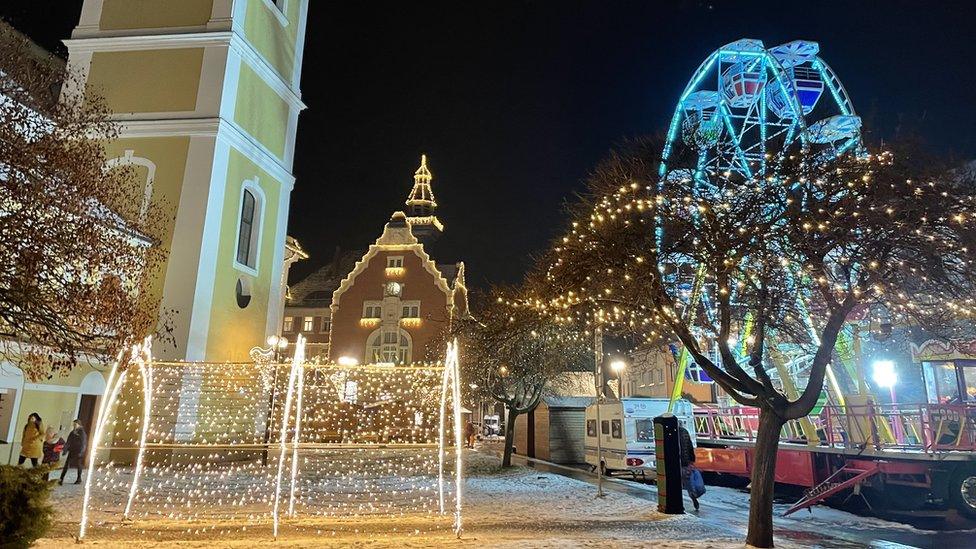
Thirty years on since the breakup of Czechoslovakia, Slovakia and the Czech Republic enjoy a harmonious relationship
31 December marked the 30th anniversary of the break-up of Czechoslovakia; one of the few cases in history when a state has been divided up without a single life being lost. Today the Czech Republic and Slovakia enjoy a harmonious, friction-free friendship - tinged with a touch of regret for what was once a happy marriage.
"This is my whole life. It's my daily bread." Filip Svrcek cast his eye along the snow-covered banks of the River Morava, watching the grey-green mass flowing towards a weir and hydroelectric power station from the 1930s.
Filip, chairman of the Hodonin Rowing Club, has spent all of his 41 years within earshot of the river, which forms a long stretch of the Czech Republic's south-eastern border with Slovakia.
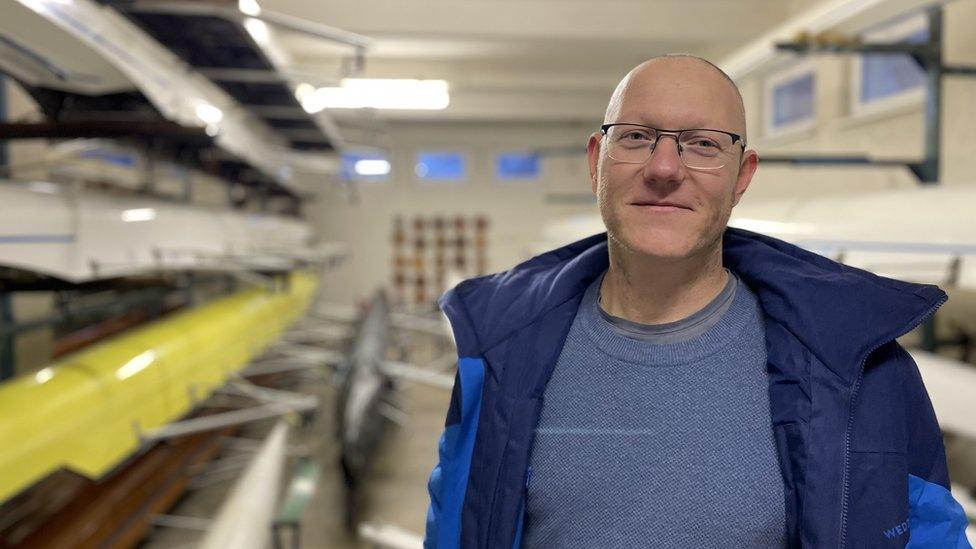
Filip says things have stayed pretty much the same since 1992
"Over there, that's Slovakia, but for us it's almost the same place," he said, explaining that his rowers follow the rules of river navigation rather than international law.
"We stray into the Slovak half of the river all the time. We don't need official permission - and I hope we never will," he went on.
The only conflicts - in summer months - were with local fishermen rather than the police, he said.
Filip, who lives 500m from the rowing club with his Slovak wife and two children, was just 11 when Czechoslovakia divided into two.
His memory of it is a child's memory: some excitement, confusion, alarm perhaps. But any emotions have long since subsided.
"For me, everything stayed the same. Friends, language - everything was the same."

The Hodonin rowing club is just inside the Czech border with Slovakia, on the banks of the River Morava
In town, at Hodonin's Masaryk Museum, I received a tour of the exhibits devoted to Tomas Garrigue Masaryk, the local boy who went on to become the founding father of Czechoslovakia at the close of World War One.
Son of a Slovak coachman and a Moravian cook who both served the imperial court, the young Masaryk - like Filip - was equally at home on both sides of the river.
Technically each time he crossed it he would be passing from the Margraviate of Moravia to the Kingdom of Hungary, from one Habsburg crownland to another.
"But he wouldn't have perceived it like that," said the museum's director Irena Chovancikova, gently scolding my efforts to apply 21st-Century understanding of statehood - with its passports and clearly-defined borders - to the Central Europe of the mid-19th Century.
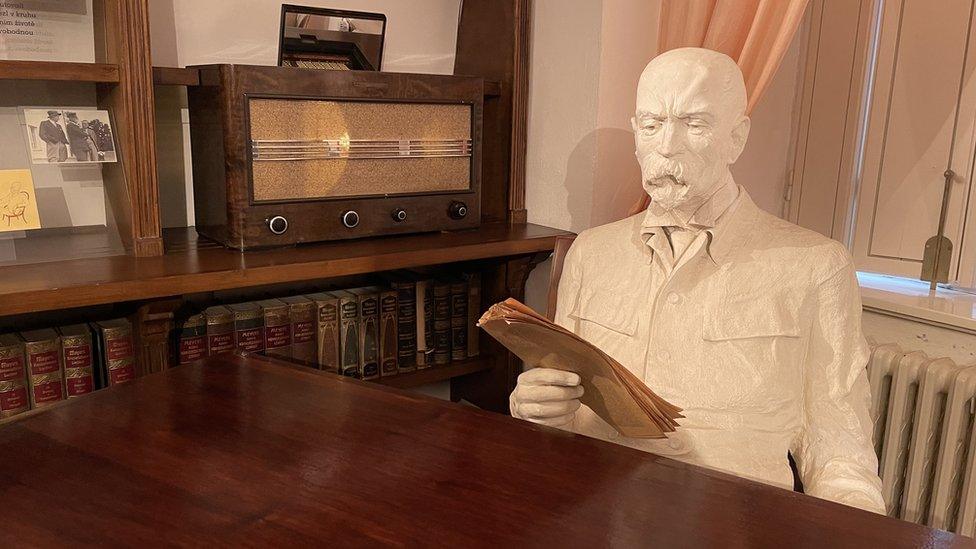
Tomas Garrigue Masaryk went on to become the founding father of Czechoslovakia
I pondered what Masaryk - who forged a common state for Czechs and Slovaks out of the ashes of the Austro-Hungarian Empire in 1918 - would have made of his treasured creation being dismembered by Czech and Slovak politicians just 75 years later.
"It's almost impossible to say," said Irena.
"Maybe he would have tugged them by their ears and told them off. Who knows? But one thing is for sure - if it had happened in his lifetime, there would certainly have been an intense debate about it," she went on.
Perhaps more intense than in 1992 - when Czechoslovakia was divvied up quietly by the federal state's two prime ministers, with no referendum.
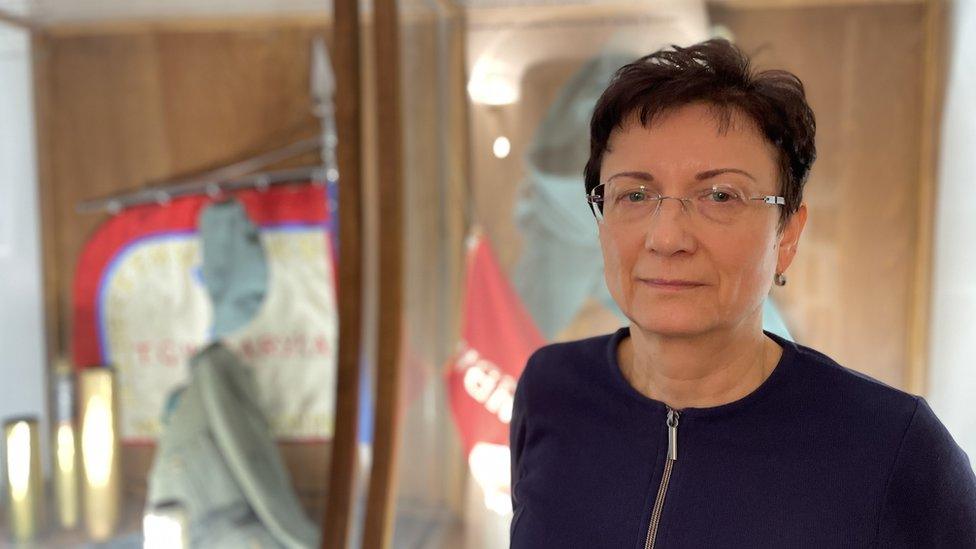
Irena Chovancikova is unsure how Masaryk would have reacted to the break-up of Czechoslovakia
After a five-minute drive I found myself trudging through the slush outside Holic castle - a rather dilapidated three-storey baroque pile just across the border in Slovakia.
The castle - once a Habsburg summer retreat - was shuttered and deserted on the day I visited, so I made a beeline for Holic's small Christmas market, to warm up with a cup of mulled wine.
I first had to scour my pockets for some euros. The most obvious difference between the two countries is that the Slovaks have enthusiastically embraced the single European currency. Their neighbours have stuck doggedly to their Czech crowns.
"Maybe it was a shame we split up, who knows? But we're just the little people aren't we," said stallholder Jan.
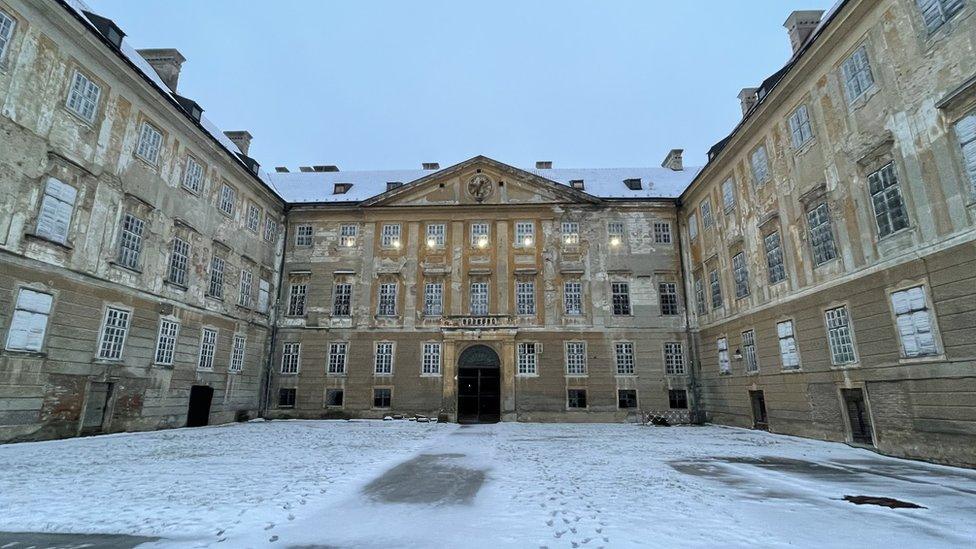
Holic Castle is located just across the border in Slovakia
"But it hasn't divided us," added his wife Mirka. "For us, nothing is divided."
That evening I stopped by an evening of folk dancing at a local hotel. There I met a member of the Valsa folk ensemble, Miroslav Milota, a man from Holic who's been commuting across the border to Hodonin for work for 42 years.
"I remember that New Year's Eve, 1992. I remember we sang the Czechoslovak anthem - both parts, the Czech verse and then the Slovak one. It was emotional," said Miroslav.
"We realised that from now on, we'd only be singing our own half. So we didn't really know was going to happen: how everything else - not just the anthem - would be divided."
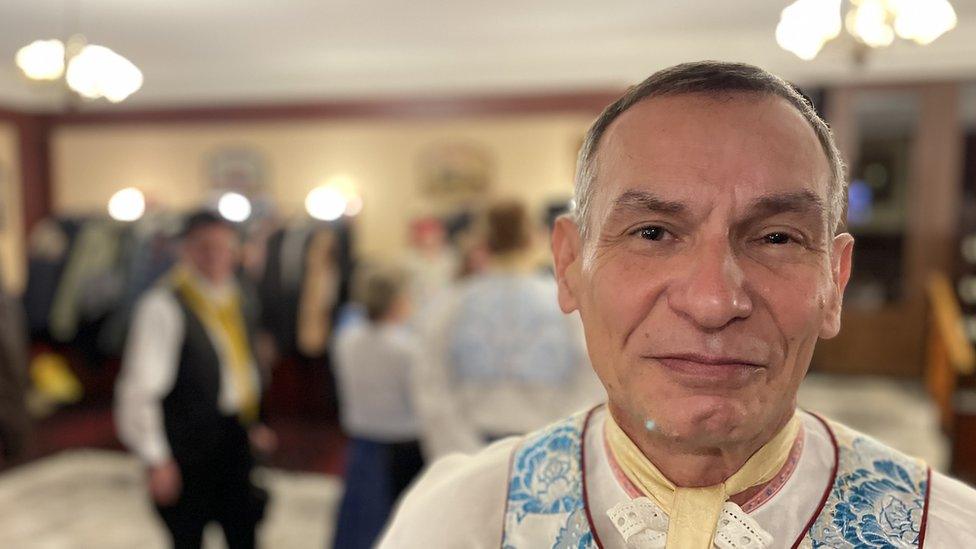
Miroslav Milota remembers the emotion at singing the Czechoslovak national anthem in 1992
I was visiting Czechoslovakia in December 1992, and remember that sense of uncertainty and nervousness. By the time I moved here permanently six months later, the country was no more.
Today Czechs and Slovaks are best friends. Dig deep enough and you will find some nostalgia for their common state, and occasionally regret for its passing.
But their fast-track divorce - the terms of which were scribbled down in the garden of a villa - is very much in the past.
Related topics
- Published12 July 2022
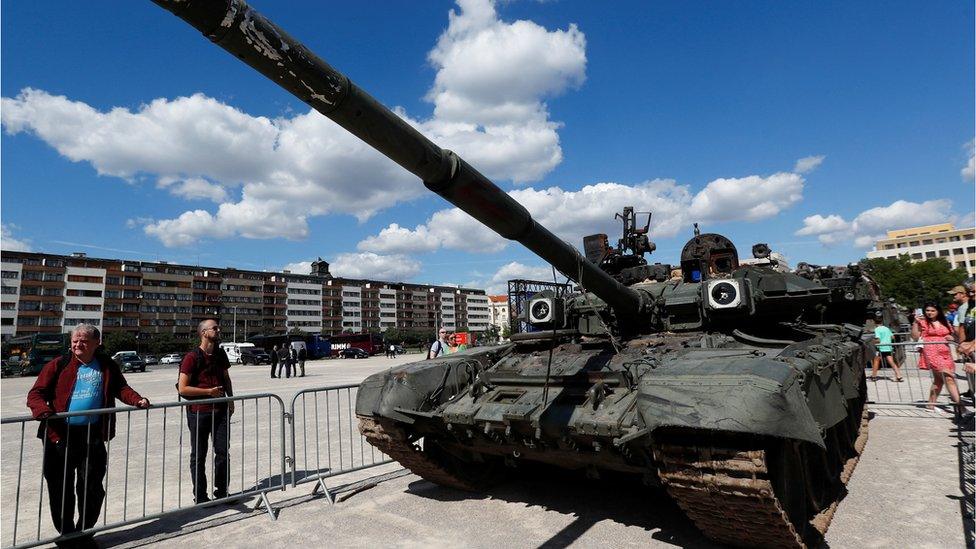
- Published11 December 2023
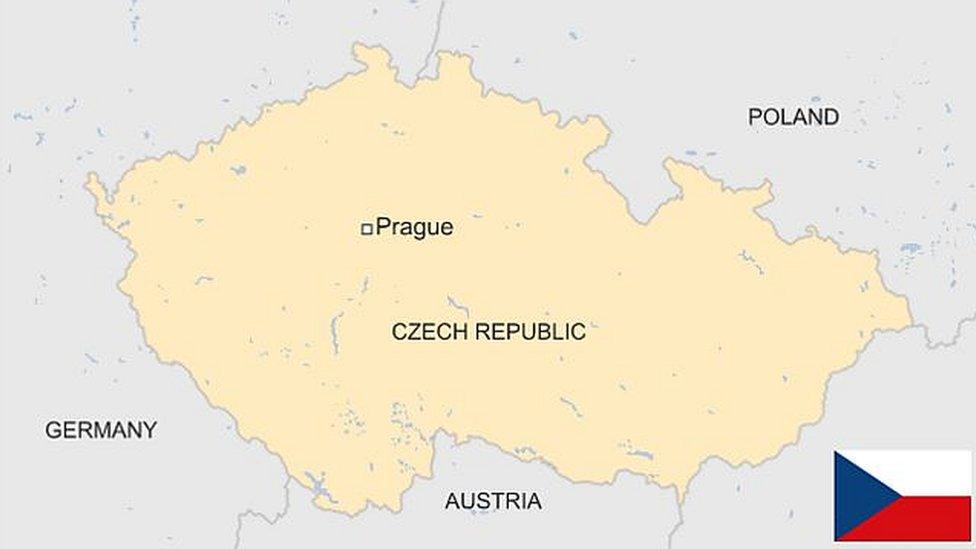
- Published5 June 2024
